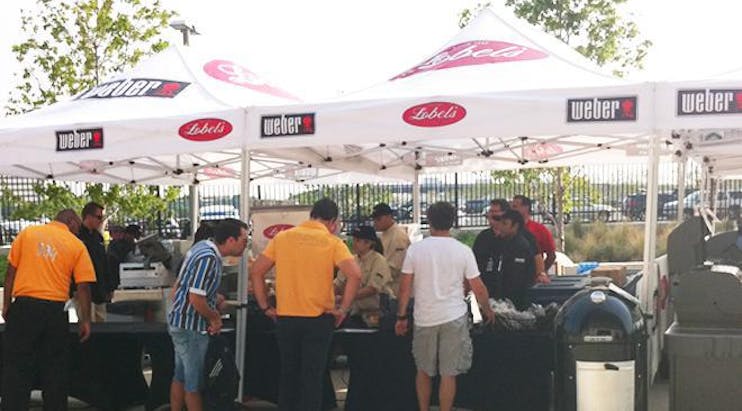Grill Buying Guide
Buying a grill is a big deal. Just like any major purchase, the more you know, the better off you’ll be. That’s why I’m writing to help give you some background and helpful tips for when you hit the stores and sales.
Stepping into a hardware store, it’s easy to get overwhelmed by the sea of stainless steel grills. Many of them appear to have endless entertaining features and appealing gadgets.
But don’t be fooled, not all grills are created equal. While some grills may have more features, they may not be as good of quality. Therefore, your purchasing decision should not be taken lightly.
To make sure you’re getting the most value for your dollar, you should figure out exactly what you want and have a good picture in your head before you walk into the store. That means research, research and more research.
You’ll first want to decide what type of grill you want to purchase: gas or charcoal. This is really a matter of preference. Personally, I like to cook on both types of grills. I use my charcoal grill when I desire a slower-paced experience and rich, smoky flavor. On the other hand, when I want to get in, get out and get grilling, gas grills are always my number one choice.
Next you’ll want to figure out your price range. It’s important to remember that buying a grill can be quite an investment—gas grills can range anywhere from $300 to $3,000 and charcoal grills can be pricey as well.
Make sure you decide what features are most important to you, and how much you’re willing to spend. One factor that’s constantly overlooked is grill performance, so steer clear of models that boast lots of features, but don’t have the quality to pull them off.
Once you’ve figured out type and price, it’s time to assess the key components of every grill:
- Cooking System: The core of any good grill is the cooking system. A well-made charcoal grill will contain a sturdy, heavy-duty, plated steel cooking grate and a charcoal grate to place the fuel on. A lid with air vents should top things off. For a free-standing, non-portable gas grill, you should look for models that have two or more separate burners (not just control knobs), which allow for greater heat control. Smaller, portable and electric models may have fewer burners but should still have solutions for heat control and emit even, consistent heat. All grills should also have an efficient grease or ash collection system to keep the heat source clear of any clogs and any run-off juices from making a mess of your gorgeous grill. The best systems quickly flash the drippings, eliminating flare-ups and creating flavorful smoke.
- Construction: A quick way to test construction is with a simple shake. A good quality grill will feel solid and sturdy when you shake it. A poorly made grill will wiggle unevenly and may sound loose or flimsy. If a grill isn’t solid on the sales floor, chances are it will fall apart rather quickly on your patio or deck.
- Assembly: Easy assembly is a priority. Some grills require hours upon hours to assemble. Better brands reduce or eliminate the amount of assembly required by the consumer.
- Service and Warranties: Top-notch customer service should come with any quality-made grill. This should include thorough, easy-to-read information about the product, and a toll-free service line for any questions after you get the grill home.
Remember, your food’s only going to be as good as your grill, so make sure a one-time bargain doesn’t turn into a long-term disappointment. Investing in a Weber grill is a sure-fire way to keep your focus on dinner instead of buyer’s remorse.



